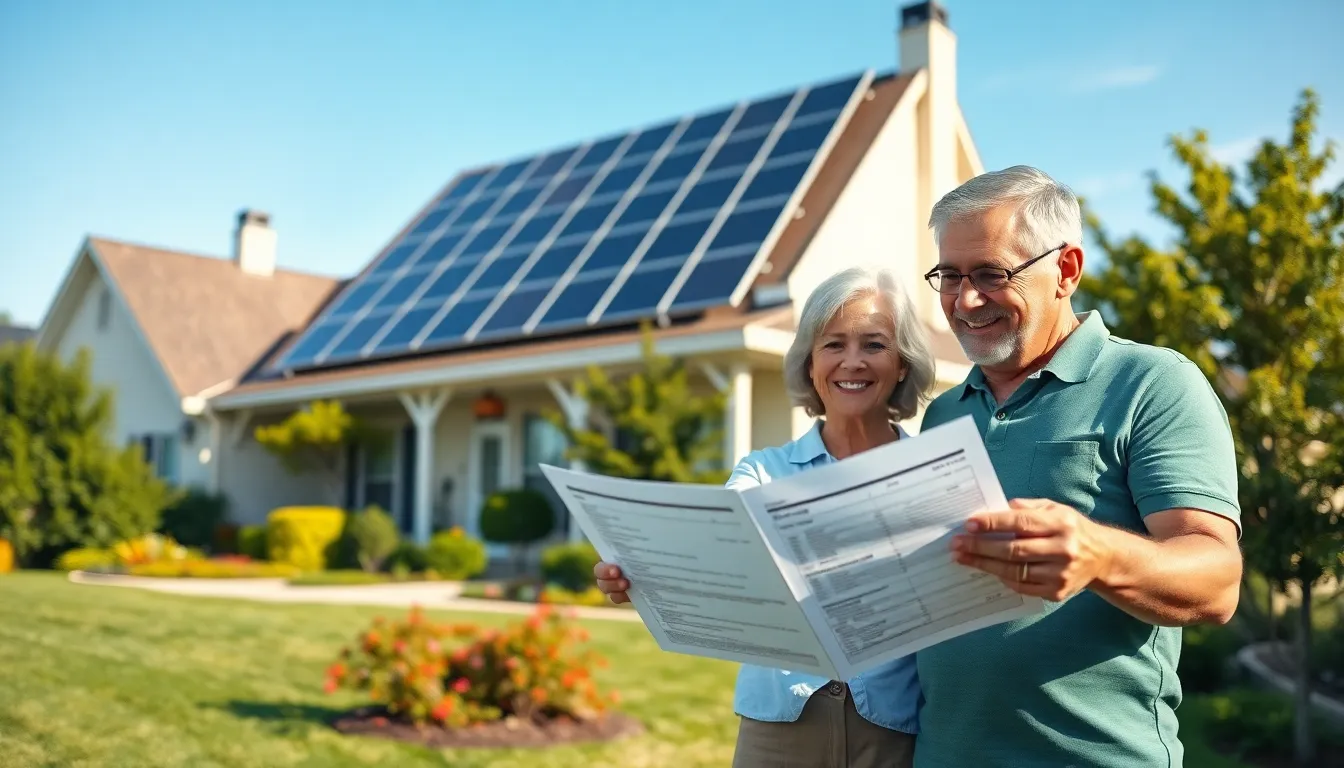Solar energy has transformed how homeowners think about electricity and sustainability. With numerous financing options available, understanding the landscape of solar financing is crucial for anyone interested in solar installations. In this text, we will investigate into various financing methods, tax incentives, and the long-term benefits of investing in solar power for homes. Let’s explore how these elements fit into the larger picture of creating a cleaner, more sustainable future while also benefiting one’s finances.
Table of Contents
ToggleUnderstanding Solar Financing Options

When considering solar power for home energy needs, understanding the financing options available is essential. The landscape of solar financing can seem complex, but it generally falls into three main categories: loans, leases, and power purchase agreements (PPAs).
Types of Solar Financing
Solar financing can primarily be classified into the following categories:
- Solar Loans: This option allows homeowners to borrow money to purchase a solar system upfront. Over time, they can pay back the loan while benefiting from energy savings.
- Solar Leases: Here, homeowners pay a fixed monthly fee to use the solar panels, which are owned by a solar company. This arrangement typically requires no upfront costs, making it attractive for many.
- Power Purchase Agreements (PPAs): Similar to a lease, a PPA involves homeowners paying for the electricity generated by the solar panels instead of leasing the panels themselves. The cost per kilowatt-hour is usually lower than traditional utility rates.
Comparing Loans, Leases, and PPAs
Each financing method has its advantages and disadvantages:
- Loans can result in significant long-term savings, especially with tax incentives, but they require initial investment and creditworthiness.
- Leases provide a straightforward payment structure without maintenance concerns but generally lack the long-term savings benefits of ownership.
- PPAs offer affordable energy costs without the upfront costs, yet the homeowner does not own the solar system and its associated benefits.
The Role of Incentives and Tax Credits
Incentives and tax credits play an essential role in making solar energy more accessible and financially viable for homeowners. The federal government offers a tax credit, known as the Investment Tax Credit (ITC), allowing homeowners to deduct a significant percentage of their solar installation costs from their federal taxes.
State and local incentives vary widely, but many areas offer additional tax credits, rebates, or performance incentives that can further reduce the out-of-pocket costs for homeowners considering solar energy. Plus, some utility companies have specific programs aimed at encouraging solar adoption, often including rebates for homeowners who install solar systems.
Key Factors in Choosing Solar Financing
Selecting the right solar financing option requires careful consideration of individual circumstances and goals. Factors such as financial stability, energy needs, and future savings should play a role in the decision-making process.
Evaluating Your Financial Situation
Homeowners should start by assessing their financial situation, including credit scores, existing debt, and income. A more favorable financial position can lead to better loan terms or suitable leasing options. It’s crucial to understand one’s budget, including the ability to handle monthly payments, whether through a loan or a lease.
Assessing Long-term Savings vs. Upfront Costs
While some financing options require larger upfront investments, they often yield greater savings over time. Homeowners need to calculate the potential long-term savings against initial costs. An effective approach may include comparing total costs, including maintenance, with potential savings on monthly utility bills. This analysis helps determine the most cost-effective option for a particular situation.
The Benefits of Solar Energy for Homeowners
Investing in solar energy provides homeowners with various benefits, from financial savings to environmental impact. As the world moves towards more sustainable energy solutions, solar power emerges as a viable choice for conscientious consumers.
Environmental Impact and Energy Independence
Solar energy is a clean, renewable source that significantly reduces carbon emissions compared to traditional fossil fuels. Homeowners who switch to solar not only contribute to environmental preservation but also achieve greater energy independence. By generating their electricity, they become less reliant on the grid and vulnerable to fluctuating utility prices.
Enhancing Property Value Through Solar Installations
Numerous studies indicate that homes equipped with solar energy systems tend to have higher property values. Potential buyers recognize the benefits of reducing utility costs and appreciate homes that are equipped for sustainability. Hence, installing solar panels can optimize resale value and be a compelling selling point.
Conclusion
Navigating the world of solar financing may seem daunting, but understanding the options available, including loans, leases, and PPAs, can empower homeowners to make informed decisions. With the impact of tax credits and incentives, and the long-term benefits of solar energy, investing in solar power can lead to significant financial savings and a positive environmental impact. Homeowners are encouraged to thoroughly evaluate their financial circumstances and consider how solar energy can fit into their broader goals. The transition to solar is not just an investment in energy: it’s an investment in a sustainable future.


